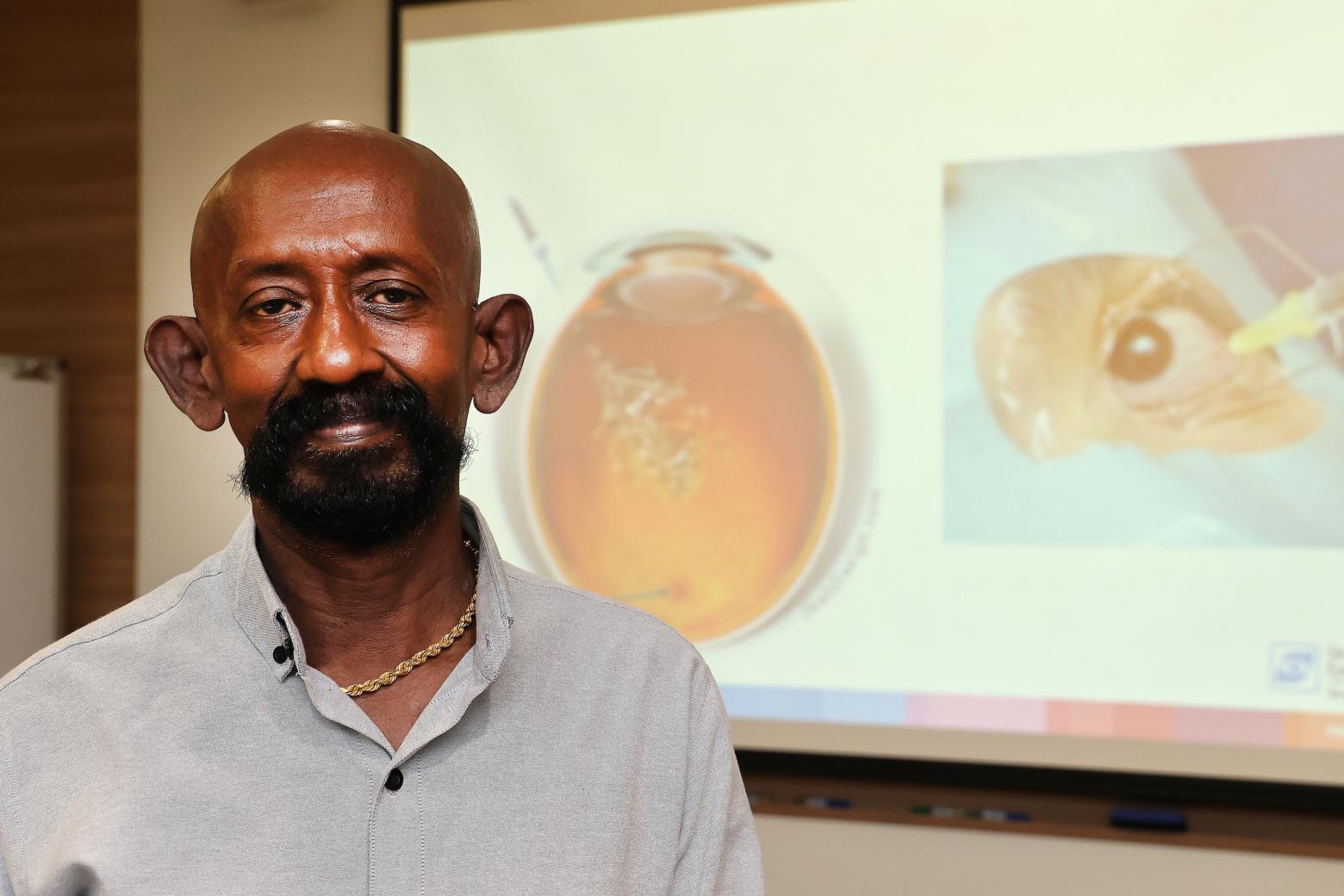New drug promises more effective treatments for eye conditions
Sign up now: Get ST's newsletters delivered to your inbox

Mr Jaya Pragas, who started taking Vabysmo earlier this year, said he is grateful for the less frequent injections of the new drug.
PHOTO: LIANHE ZAOBAO
Follow topic:
SINGAPORE - About three years ago, Mr Jaya Pragas started seeing a black dot in his right eye, which obscured two-thirds of his vision in that eye.
"I thought I was going to be blind," said the now 61-year-old, an operations executive with the Singapore Prison Service.
He initially thought he might need spectacles, but when he got his vision tested at an optical shop, the staff there realised he might have a problem with his vision and suggested he make an appointment with a specialist.
In early 2020, the former prisons officer visited the Singapore National Eye Centre (SNEC) and found that he had neovascular age-related macular degeneration (nAMD) - a condition which affects the part of the eye that provides the sharp vision needed for activities such as reading and driving.
He regained most of his vision in six months, after receiving treatment which involved having medication injected into his eye every month. He has to continue receiving these injections to maintain his eyesight.
Now, a new drug aims to more effectively treat those suffering from nAMD and diabetic macular edema (DME) - or vision loss resulting from diabetes.
Developed by the Singapore Eye Research Institute (Seri) and Swiss pharmaceutical firm Roche, Vabysmo was approved by the Health Sciences Authority (HSA) last month.
Vabysmo neutralises two proteins that destabilise blood vessels and cause them to leak, increasing inflammation of the eye that leads to vision loss.
DME and nAMD are among the most common retinal conditions here, noted Professor Gemmy Cheung, who is head of retina research at Seri and head of the medical retina department at SNEC.
Some 10 per cent of diabetic patients in Singapore may require treatment for DME, while 0.5 per cent of the population here may suffer from nAMD, she said.
One advantage of the new treatment is the longer intervals between treatments, said Roche ophthalmology patient journey partner Resheeban Selvarajah.
"A large proportion of patients were able to go between three and four months, and there were at least 50 per cent of patients with DME who were able to go four months between the injections," said Dr Resheeban.
He hoped this would reduce the burden on patients to go for treatments, and that the longer intervals between injections could translate into greater cost savings for patients. Roche declined to reveal the cost of the new drug.
Mr Jaya - who started taking Vabysmo earlier this year and is expected to be on the treatment until next year - said he is grateful for the less frequent injections, which he credits with helping to maintain his eyesight.
"Now my eyes are perfect," he said.

